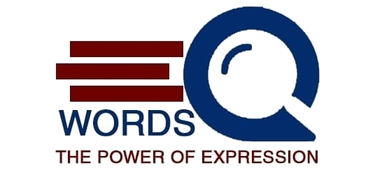
Creative Writing Meaning
– Creative Writing Meaning –
Wondering what creative writing meaning could be? The answer can be simple, but breaking it down is far more useful. Learn more and gain some insightful tips for yourself in this article.
Creative writing is all about using your imagination and creativity to express your ideas and thoughts in a unique way.
Simply put, it’s about adding your own ‘flair’ to your writing, going beyond the traditional boundaries of academic or other technical literature.
With this helpful guide and introduction to creative writing, you can learn more about creative writing meaning, different types, and some top tips on how to get started.
READ ALSO:
- Daddy’s Little Girl 2 – Letter to Parents
- The Tortoise And The Feast in Heaven
- Why The Tortoise And The Squirrel Are Not Friends
What is Creative Writing?
As the name implies, creative writing is a type of writing that extends beyond the traditional boundaries of normal, professional, academic, or technical writing.
Instead, it encompasses a wide range of genres and styles in both fiction and nonfiction writing, including storytelling, playwriting, poetry, prose, journalism, and more.
Though the definition is somewhat ambiguous, creative writing is generally defined as any writing that is original and expressive of oneself.
It is usually distinguished by an emphasis on narrative craft, with an emphasis on elements such as character development, narrative, and plot, infusing its structure with imagination, invention, and story.
In this sense, creative writing can be defined as any writing of contemporary, original composition that is not bound by standard conventions and employs a wide range of elements in its craft.
In an academic setting, creative writing classes are usually divided into fiction, poetry, or scriptwriting, with a focus on writing in an original style that is not defined by pre-existing structures and genres.
We believe the above explanation has solved the problem of creative writing meaning, right?
Types of Creative Writing
Words can be used in an infinite number of ways to convey human experience. This is the most enjoyable aspect of the craft.
Here are some of the most common types of creative writing, along with a general description of each:
Memoir/Autobiography
A memoir/autobiography is narrative writing based on the author’s own memories.
Flash Fiction
Character and plot are presented in extreme brevity, with word counts ranging from six to one thousand words.
Novel
A long work of narrative fiction with a word count ranging from 80,000 to 100,000 words.
Novella
The novella is narrative prose with a word count of ten thousand to forty thousand words.
Play
A dramatic work composed primarily of dialogue and intended for theatrical performance.
Poetry
Aesthetic and often rhythmic qualities of language are used to convey meaning in poetry. Poems may or may not have a narrative structure.
Screenplay
It is a piece of writing by a screenwriter that is intended for film, television, or a video game.
Short story
The short story is prose fiction typically read in one sitting, ranging from 5,000 to 10,000 words. It is a sub-genre of fictional prose narrative that has a single subject matter with limited characterization.
Other examples of creative writing are songs, epics, myths, legends, television scripts, screenplays, radio scripts, etc.

What are Some Creative Writing Techniques?
Writers frequently use a variety of creative writing techniques and literary devices to make their writing stand out, such as:
Character Development
This is the process of creating a realistic, well-rounded character with depth, personality, and clear goals or motivations.
Plot Development
The story of your writing – how it develops, unfolds and progresses over time.
Point of View
This is the angle from which a story is told. It specifies who is telling the story and how the reader will receive the information.
Quite often, writers will play with the central character’s or protagonist’s point of view in order to deceive and twist the reader’s perspective.
Dialogue
It is the speech and conversations that characters use to communicate with one another in a story.
Dialogue and language choices made by a character can help define their personality.
Literary Devices
Metaphors, similes, and alliteration are examples of literary devices used to make creative writing more imaginative and descriptive.
Writers use these in a variety of ways to make their writing more vivid, interesting, and engaging.
Creative Writing Tips
If you want to get your creative juices flowing and improve your writing craft, check out the following tips on how to start creative writing:
Allow Yourself Time and Space to Write Creatively
It isn’t easy to write a poem or work on your memoir between phone calls. Don’t make writing more difficult for yourself by attempting to fit it into your schedule.
Instead, set aside time to concentrate solely on creative writing, preferably in a distraction-free environment such as your bedroom or a coffee shop.
Learn about Yourself as a Writer
The more you write, the more aware you’ll become of your own writing strengths and weaknesses.
You’ll figure out what kinds of characters, scenes, language, and pieces you enjoy writing the most and where you struggle the most.
Knowing what type of writer you are can help you decide what types of projects to pursue.
Try Something New
Do the types of writing that you struggle with once you’ve identified them. You will never grow as a writer if you only focus on your strengths.
Try writing in a different genre or a completely different type of writing. For example, if you write short stories, try poetry or personal essays.
Do you need assistance getting started? Try one (or all!) of these 20 creative writing prompts.
Take Notes from Other Writers
There are numerous resources available for creative writing. They should be read and watched.
If you like the work of a particular writer, look for interviews with them and personal essays they’ve written about their creative processes.
Don’t limit yourself to well-known authors, either. Participate in online forums, social media groups, and, if possible, in-person creative writing groups.
By doing so, you position yourself to learn from writers from all walks of life… and to help other writers as well.
Write with Creativity
Grammarly cannot assist you in becoming more creative, but we can assist you in honing your writing so that your creativity shines as brightly as possible.
Once you’ve finished writing, Grammarly will catch any errors and suggest strong word choices that accurately express your message.
READ ALSO:
- Song of a Girl Going to Bathe
- Writing Tips To Guide Your Writing Journey
- Life is a Place Where it’s Forbidden to Live
Creative writing is an expressive form of literature that requires you to use your own imagination, creativity, and story to portray a specific message, emotion, or plot.
It defies other forms of writing’s traditional boundaries and is entirely subjective to our own preferences and experiences.
To get started with creative writing, it’s important to immerse yourself in the world of literature as much as possible, reading and writing as much as you can – and even workshopping your work where possible.
Summer schools and evening classes in creative writing are a great way to meet other like-minded students, share knowledge and feedback, and really upskill yourself.
